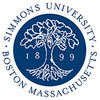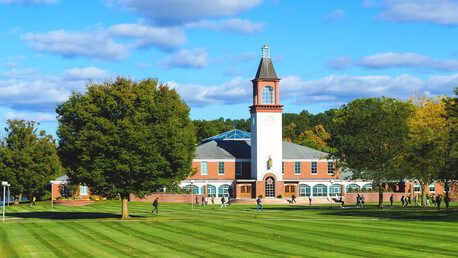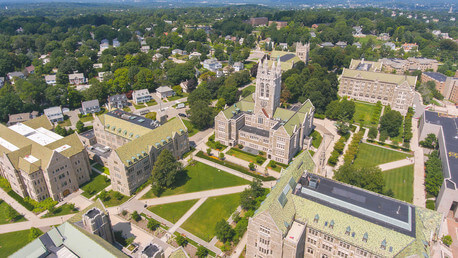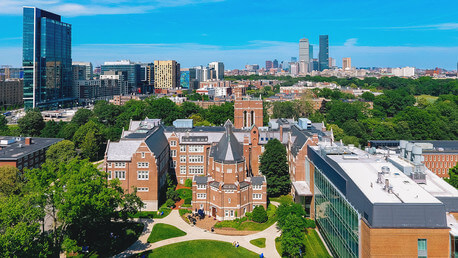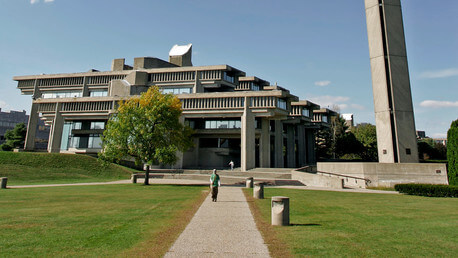Tuition, Cost & Aid
Affordability and Cost
Average Net Price Average net price for full-time, first-time degree/certificate-seeking undergraduates paying the in-state or in-district tuition rate who were awarded grant or scholarship aid from federal, state or local governments, or the institution. Other sources of grant aid are excluded. Aid awarded anytime during the full aid year is included.
Average net price is generated by subtracting the average amount of federal, state or local government, or institutional grant and scholarship aid from the total cost of attendance. Total cost of attendance is the sum of published tuition and required fees (lower of in-district or in-state), books and supplies and the weighted average room and board and other expenses.
Average net price is generated by subtracting the average amount of federal, state or local government, or institutional grant and scholarship aid from the total cost of attendance. Total cost of attendance is the sum of published tuition and required fees (lower of in-district or in-state), books and supplies and the weighted average room and board and other expenses.
$30,008
Average Net Price By Family Income
Tuition
| In-State Tuition In-state tuition is the tuition charged by institutions to those students who meet the state's or institution's residency requirements. In-district tuition is the tuition charged by the institution to those students residing in the locality in which they attend school and may be a lower rate than in-state tuition if offered by the institution. | $44,350 |
| Out-of-State Tuition Out-of-state tuition is the tuition charged by institutions to those students who do not meet the state's or institution's residency requirements. Out-of-district tuition is the tuition charged by the institution to those students not residing in the locality in which they attend school. | $44,350 |
Additional Costs
Room and Board The weighted average for room and board and other expenses is generated as follows:
| $16,368 |
| Books and Supplies | $1,280 |
| Tuition Payment Plan | Yes |
Financial Aid: visit page
Financial Aid Email: [email protected]
Aid & Grants
0
100
87%
Need Met
Students Receiving Gift Aid Percent of undergraduate students awarded federal gift aid. Federal gift aid includes any grant or scholarship aid awarded, from the federal government, a state or local government, the institution, and other sources known by the institution. Students Receiving Grants Percent of undergraduate students awarded grant aid. Grant aid includes any grant or scholarship aid awarded, from the federal government, a state or local government, the institution, and other sources known by the institution. Students receiving state aid Students receiving federal aid
24%
Average Aid Per Year
$31,645
24%
Average Federal Grant Aid Per Year
$1,918
Average Institution Grant Aid Per Year
$29,514
15%
Average State Grant Aid Per Year
$2,800
88%
Average Federal Grant Aid Per Year
$1,918
Average Grant & Scholarship By Family Income
Total Needs Based Scholarships/Grants Total amount of grant or scholarship aid awarded to all undergraduates from the federal government, state/local government, the institution, and other sources known to the institution.
$42,037,940
Total Non-Need-Based Scholarships/Grants
$11,630,749
Student Loans
Students Borrowing Loans Loans to students - Any monies that must be repaid to the lending institution for which the student is the designated borrower. Includes all Title IV subsidized and unsubsidized loans and all institutionally- and privately-sponsored loans. Does not include PLUS and other loans made directly to parents.
69%
Average Loan Amount Per Year
$9,612
Students receiving federal loans
69%
Average Federal Loans Per Year
$5,285
Average Other Loans Per Year
$16,223
Average Debt at Graduation The median federal debt of undergraduate borrowers who graduated. This figure includes only federal loans; it excludes private student loans and Parent PLUS loans.
$21,500
Loan Default Rate
2%
US National: 7%
Median Monthly Loan Payment The median monthly loan payment for student borrowers who completed, if it were repaid over 10 years at a 5.05% interest rate.
$239
What Students Are Saying
Simmons College is equipped with the most up-to-date technology in all of it's computer labs and its newly-renovated library. Students will find everything they need here, including a gym, great food, student lounges and fun clubs and activities. One of the great values of Simmons College is that accepted students can enroll in classes in five other colleges that belong to the Colleges of the Fenway Consortium.
Anne from Philadelphia
Application was free when I applied. Most students also received generous scholarship. Being a member of the honors program I also receive an annual book stipend and the program pays for outings and nights in. I suggest taking advantage of the minor activities fee because the funds are used towards pizza nights, movie viewings, bake offs and more.
Natalie
simmons is great for setting up students with successful futures because of their great opportunities through internship. simmons is also located in the heart of the hospital district in boston. so if you're looking into the health science field you know that a great opportunity is just around the corner. simmons is partnered with harvard medical school and the hospitals located across the street.
Melissa from Boston, MA
It's an expensive school, and you will need financial aid, but the classes are very good, and very thorough. The only way you won't learn something is if you're not paying attention. Many of the classes are hands-on, especially in the science departments, where they have several long labs that apply what you've learned in class.
Shawna from Nobleboro, ME
I wish our music department was larger than one prof (he's awesome, but he's just one guy, there's only so much he can do), but there are some cool cross-enrollment options with the New England Conservatory, and music is not the major I plan to make a living with. TBH if you're majoring in one of the big programs I mentioned above, you're getting the best deal - that's where the college's energy is focused and that's where its reputation and industry connections are strongest. We have a Music major, for example, but it just won't have the same strength as, say, a music major from St. Olaf or Juilliard.
In fact, do this with every college you plan to apply to: take their course catalog and flip through it to see which majors have the largest amount of course offerings. Just go by the numbers. This is a pretty reliable guide to which majors are strongest at the school. I wish I had thought to do this when I was applying and making final admissions decisions.
Another major factor, of course, is financial aid: the application fee was waived when I applied and I was fortunate to receive a considerable academic scholarship and grant funding. Simmons was the least expensive of my out-of-state college options. In my conversations I've gathered that many students here receive pretty good financial aid, but of course this will vary depending on your academics, your financial circumstances and where else you apply.
In fact, do this with every college you plan to apply to: take their course catalog and flip through it to see which majors have the largest amount of course offerings. Just go by the numbers. This is a pretty reliable guide to which majors are strongest at the school. I wish I had thought to do this when I was applying and making final admissions decisions.
Another major factor, of course, is financial aid: the application fee was waived when I applied and I was fortunate to receive a considerable academic scholarship and grant funding. Simmons was the least expensive of my out-of-state college options. In my conversations I've gathered that many students here receive pretty good financial aid, but of course this will vary depending on your academics, your financial circumstances and where else you apply.
Colette from Portland, OR
Financial aid is amazing, so I'm practically being paid to attend here and I absolutely love it!
Danielle from Maine
Although Simmons is very expensive, you can definitely tell what you're spending your money on. There are computers and printers everywhere around campus for use. The classrooms are so nice and have smart boards and computers in them. The desks and chairs are comfy. Whenever there is a problem in the residence halls, it always gets fixed and as fast as possible.
Heather from Boston, MA
There is so much to learn, you might not know where to start. Talk to your adviser about classes, and talk with your friends about professors they've had and classes they've taken.
Also, if you find out what books you need for classes, see if you can by them online, bring them from home, or borrow them from friends, family or your local library. The prices at the bookstore can be higher than you expect.
Also, if you find out what books you need for classes, see if you can by them online, bring them from home, or borrow them from friends, family or your local library. The prices at the bookstore can be higher than you expect.
Nicole from Malden, MA
